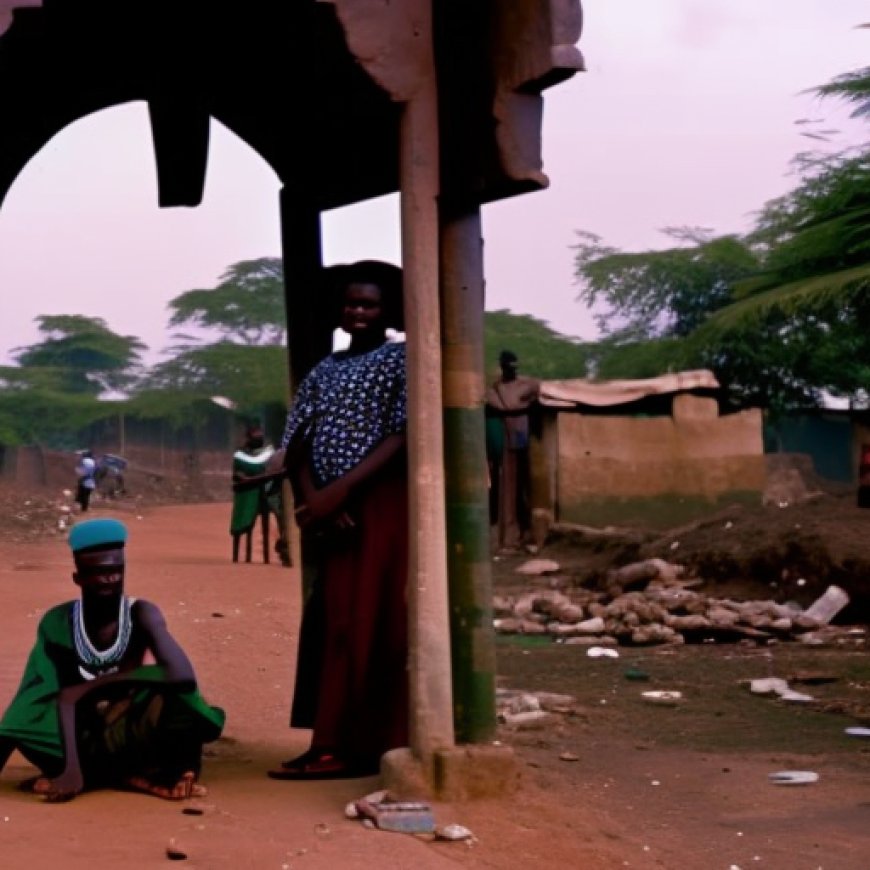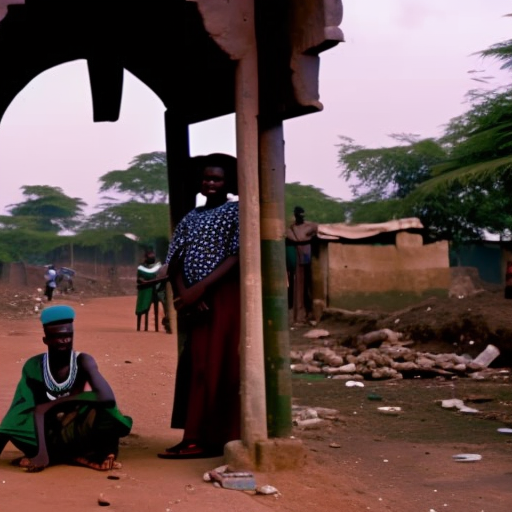How poor leadership, funding frustrate basic education in northern Nigeria
How poor leadership, funding frustrate basic education in northern Nigeria Punch Newspapers


Education Crisis in Northern Nigeria: A Reflection of Neglected Sustainable Development Goals
Introduction
It was a cold morning in Lau Local Government Area of Taraba State. The date was Tuesday, May 23, 2023, and time was a few minutes after 10.
One of our correspondents had embarked on a trip to Karim Lamido LGA for an assignment, when he suddenly sighted the LGEA Primary School in Tsakuma community and beheld a strange scene several metres away.
The Jalingo–Lankaviri–Lau Road, where the school is located, is less than 40 kilometers away from Jalingo, the state capital.
Our correspondent observed that over 40 pupils were camped under a makeshift tent, which served as their classroom.
They sat on logs, and given their population some sat in the sun outright as the shade provided by the shed could not cover them.
And on a closer look, the majority of the pupils looked malnourished with their hair unkempt, while their torn and tattered clothes of different styles and colours – clearly with no uniformity in dressing – reeked of abject poverty.
Further highlighting their situation was how their tender feet were soaked in the dust, with no footwear in sight, exposing the several tiny sores which riddled their legs and feet. Seemingly oblivious of their plight or out of innocent indifference, they played around joyfully on the unprotected premises.
The Plight of the Pupils
Concerned by the ugly situation and the pupils’ noticeable resolve to be in school, Sunday PUNCH took further steps to interrogate the daily reality of these leaders of tomorrow. One of their class teachers, who simply gave his name as Musa, and was the only one available at the time of visit, told one of our correspondents about the pupils’ dedication to their studies.

Although most of the pupils were not fluent in English language, they spoke fluently in their mother tongue, Hausa, the dominant language in the area.
Luka Tanko, who wore a pair of light green sport shorts beneath an orange T-shirt, alongside his friend, John Ishaya, who was clad in a pair of black sportswear under his yellow shirt were eager to lament the hardship they faced in their bid to get education, hoping help would eventually come their way.
Tanko in his tender voice said, “I’m from a family of nine, and I’m number seven. My siblings do not go to school. Some of them assist my mother on the farm while the eldest, who is a fisherman, does not live with us.
“I trek a very long distance to school every day, and because my mother could not afford to pay my school fees of N2,000, I use to join other pupils who also could not pay school fees to work on people’s farm every Thursday so that our teacher can help us raise some money for our fees.”
His revelation, which was a reflection of what many of his age face in the North, and indeed other parts of the country, was heartbreaking. This is more so considering the billions budgeted for education yearly by the federal and state governments.
Ishaya’s experience is equally distressing. A primary three student, he confessed to not having writing materials, but that instead of staying at home, he preferred to trek the long distance to school every day to learn and interact with his friends.
This, Ishaya says, he looks forward to every day, hoping things would get better someday.
“I cannot stay at home when my friends are in school. I copy my notes in Luka’s book. I lost my books two weeks ago when we went to the farm. Since then, my mother refused to buy new notebooks for me.
“I love education. My teacher said if I go to school I will be a great man. I want to drive a car and build a house, and my teacher said I can be anything I want if I have education,” Ishaya said as he moved around restlessly.
He said his mother had promised to relocate him from the village to join a relation in Jalingo after his primary school education. There, he had been assured, he would continue his education. He noted that he couldn’t wait to leave for the city.
“Uncle, can we follow you to Jalingo?” One of the pupils interjected as the crowd of pupils swarming around the Sunday PUNCH reporter began to swell.
Like Tanko and Luka, another pupil, a nine-year-old indigent female pupil, Sewuese Godwin, equally shared her frustration in her bid to achieve her aspirations and educational goals.
She stated, “I am getting tired of going to school in this village. I want to go and meet my uncle in town where I can also attend a good private school and actualise my dream of becoming a lawyer.
“The suffering here is too much. We trek about 10 kilometres daily to school and any day it rains, we wouldn’t be able to go to school because we do not have classrooms built with blocks. We receive lessons under mango trees.”
Godwin, who attends the LGEA Primary School, Tse-Facii in Chanchanji Ward of Takum Local Government Area of Taraba State, like Tanko, Ishaya and others, observed that many pupils attending schools, especially at the primary and secondary levels in northern Nigeria only see classroom blocks on the television.
SDGs, Targets, and Indicators
1. SDGs Addressed:
- SDG 4: Quality Education
- SDG 1: No Poverty
- SDG 5: Gender Equality
2. Specific Targets:
- Target 4.1: By 2030, ensure that all girls and boys complete free, equitable, and quality primary and secondary education.
- Target 1.2: By 2030, reduce at least by half the proportion of men, women, and children of all ages living in poverty in all its dimensions according to national definitions.
- Target 5.3: Eliminate all harmful practices, such as child, early, and forced marriage and female genital mutilation.
3. Indicators:
- Indicator 4.1.1: Proportion of children and young people (a) in grades 2/3; (b) at the end of primary; and (c) at the end of lower secondary achieving at least a minimum proficiency level in (i) reading and (ii) mathematics, by sex.
- Indicator 1.2.1: Proportion of population living below the national poverty line, by sex and age.
- Indicator 5.3.1: Proportion of women aged 20-24 years who were married or in a union before age 15 and before age 18.
Analysis:
1. SDGs Addressed:
The issues highlighted in the article address the following SDGs:
- SDG 4: Quality Education – The article discusses the poor state of public schools, lack of infrastructure, and the challenges faced by students in accessing education.
- SDG 1: No Poverty – The article mentions the poverty experienced by families, the inability to pay school fees, and the need for financial assistance to access education.
- SDG 5: Gender Equality – The article highlights the barriers faced by girls in accessing education, such as early marriage and cultural beliefs.
2. Specific Targets:
Based on the article’s content, the following specific targets can be identified:
- Target 4.1: By 2030, ensure that all girls and boys complete free, equitable, and quality primary and secondary education – The article discusses the challenges faced by students in accessing education, including lack of classrooms, teaching materials, and resources.
- Target 1.2: By 2030, reduce at least by half the proportion of men, women, and children of all ages living in poverty in all its dimensions according to national definitions – The article highlights the poverty experienced by families, which hinders their ability to pay school fees and provide necessary resources for education.
- Target 5.3: Eliminate all harmful practices, such as child, early, and forced marriage and female genital mutilation – The article mentions the barriers faced by girls in accessing education, including early marriage and cultural beliefs.
3. Indicators:
The article mentions or implies the following indicators that can be used to measure progress towards the identified targets:
- Indicator 4.1.1: Proportion of children and young people (a) in grades 2/3; (b) at the end of primary; and (c) at the end of lower secondary achieving at least a minimum proficiency level in (i) reading and (ii) mathematics, by sex – The article discusses the challenges faced by students in achieving proficiency in reading and mathematics due to the lack of resources and quality education.
- Indicator 1.2.1: Proportion of population living below the national poverty line, by sex and age – The article highlights the poverty experienced by families, which can be measured by the proportion of population living below the national poverty line.
- Indicator 5.3.1: Proportion of women aged 20-24 years who were married or in a union before age 15 and before age 18 – The article mentions early marriage as a barrier to girls’ education, which can be measured by the proportion of women married before age 15 and before age 18.
Table: SDGs, Targets, and Indicators
| SDGs | Targets | Indicators |
|---|---|---|
| SDG 4: Quality Education | Target 4.1: By 2030, ensure that all girls and boys complete free, equitable, and quality primary and secondary education | Indicator 4.1.1: Proportion of children and young people (a) in grades 2/3; (b) at the end of primary; and (c) at the end of lower secondary achieving at least a minimum proficiency level in (i) reading and (ii) mathematics, by sex |
| SDG 1: No Poverty | Target 1.2: By 2030, reduce at least by half the proportion of men, women, and children of all ages living in poverty in all its dimensions according to national definitions | Indicator 1.2.1: Proportion of population living below the national poverty line, by sex and age |
| SDG 5: Gender Equality | Target 5.3: Eliminate all harmful practices, such as child, early, and forced marriage and female genital mutilation | Indicator 5.3.1: Proportion of women aged 20-24 years who were married or in a union before age 15 and before age 18 |
Behold! This splendid article springs forth from the wellspring of knowledge, shaped by a wondrous proprietary AI technology that delved into a vast ocean of data, illuminating the path towards the Sustainable Development Goals. Remember that all rights are reserved by SDG Investors LLC, empowering us to champion progress together.
Source: punchng.com

Join us, as fellow seekers of change, on a transformative journey at https://sdgtalks.ai/welcome, where you can become a member and actively contribute to shaping a brighter future.







